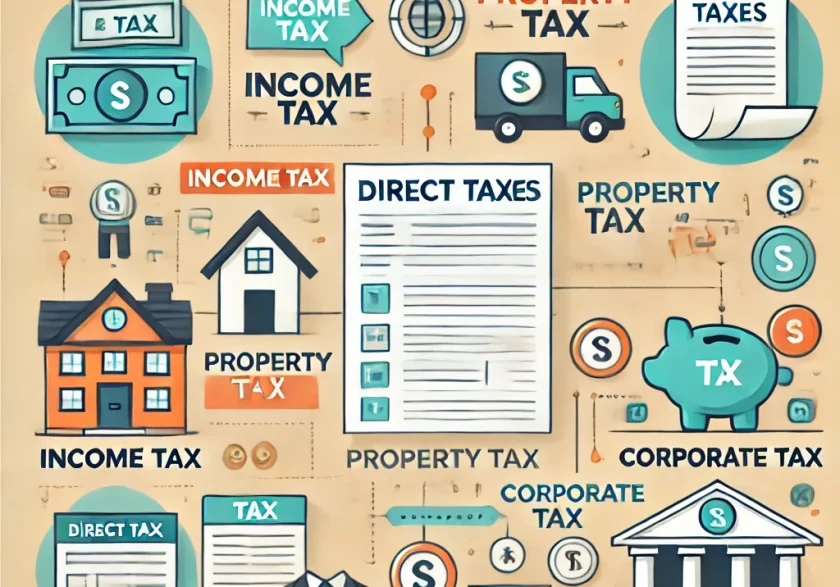
Taxation in India -AAPT CORP And Associates
Taxation in India is a complex and evolving system that forms the backbone of the government’s revenue. It is divided into two major categories: Direct Taxes and Indirect Taxes.
Direct Taxes
Direct taxes are those that are levied directly on individuals and businesses, and they cannot be shifted to others. These include:
- Income Tax: Levied on individuals and entities based on their earnings. The tax slabs vary depending on income levels and residential status.
- Corporate Tax: Imposed on domestic and foreign companies operating in India. The rates vary based on the type and size of the company.
- Capital Gains Tax: Charged on the profits earned from the sale of capital assets like real estate, stocks, and bonds.
- Wealth Tax (Abolished in 2016): Previously levied on individuals and companies exceeding a specific net wealth limit.
Indirect Taxes
Indirect taxes are those that are levied on goods and services and are ultimately borne by consumers. These include:
- Goods and Services Tax (GST): Introduced in 2017, GST is a unified tax replacing multiple indirect taxes like VAT, service tax, excise duty, and others. It has four primary tax slabs: 5%, 12%, 18%, and 28%.
- Customs Duty: Levied on goods imported into or exported from India.
- Excise Duty (Now Merged with GST): Previously imposed on the production of goods within the country.
- Stamp Duty: Charged on legal documents related to property transactions, agreements, and other instruments.
Tax Administration in India
The tax system in India is administered by various government authorities:
- Central Board of Direct Taxes (CBDT): Governs direct taxes and formulates tax policies.
- Central Board of Indirect Taxes and Customs (CBIC): Manages indirect taxes, customs duties, and GST regulations.
- State Tax Authorities: Handle state-specific taxes and revenue collection.
Recent Tax Reforms
The Indian tax system has undergone significant reforms in recent years:
- Introduction of GST (2017): Simplified the indirect tax structure, reducing compliance burdens.
- Corporate Tax Reduction (2019): The government lowered corporate tax rates to boost investment and economic growth.
- Faceless Assessment (2020): Introduced a transparent online system for tax assessments and appeals.
Challenges and the Way Forward
Despite reforms, the Indian taxation system faces challenges such as tax evasion, complex compliance procedures, and disputes. The government is continuously working on simplifying tax structures, increasing digitalization, and ensuring better compliance to enhance transparency and ease of doing business.
Taxation in India remains a dynamic field with ongoing changes to align with economic needs and global standards.






